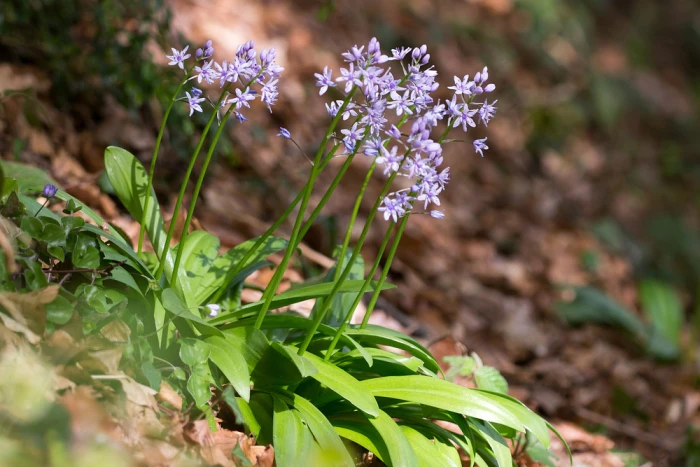Pyrenean Squill
(Scilla lilio-hyacinthus)
Pyrenean Squill (Scilla lilio-hyacinthus)
/
/

Thierry Arbault
CC BY 4.0
Image By:
Thierry Arbault
Recorded By:
Copyright:
CC BY 4.0
Copyright Notice:
Photo by: Thierry Arbault | License Type: CC BY 4.0 | License URL: http://creativecommons.org/licenses/by/4.0/ | Rights Holder: Thierry Arbault | Publisher: iNaturalist | Date Created: 2013-04-23T00:00-07:00 |






















Estimated Native Range
Climate Requirements
| • Precipitation | 41" - 55" |
| • High Temp. | 69°F - 78°F |
| • Low Temp. | 25°F - 38°F |
Summary
Scilla lilio-hyacinthus, commonly known as Pyrenean squill, is a perennial herb that is native to the mountainous regions of the Pyrenees and Cantabrian mountains in northern Spain and southern France. It typically grows up to 12 inches tall and is characterized by its glossy green, lanceolate leaves. During the flowering season from April to June, Pyrenean squill produces striking star-shaped blue or lilac flowers that are highly ornamental. The plant is naturally found in damp terrains such as stream edges and moist meadows, often in calcareous soils, and it thrives at altitudes between 2,000 and 5,200 feet where it contributes to the biodiversity of alpine and subalpine ecosystems.
Pyrenean squill is valued for its showy flowers and is occasionally cultivated in rock gardens, alpine houses, and as a border plant in gardens that can replicate its native moist and well-drained soil conditions. It prefers partial shade to full sun and requires consistent moisture during its growing season. While it is not commonly known for having significant problems with diseases or pests, it is important to avoid waterlogged conditions which can lead to bulb rot. This plant is not typically associated with aggressive roots or invasiveness. In cultivation, it can provide an early source of nectar for pollinators, making it a beneficial addition to wildlife-friendly gardens.CC BY-SA 4.0
Pyrenean squill is valued for its showy flowers and is occasionally cultivated in rock gardens, alpine houses, and as a border plant in gardens that can replicate its native moist and well-drained soil conditions. It prefers partial shade to full sun and requires consistent moisture during its growing season. While it is not commonly known for having significant problems with diseases or pests, it is important to avoid waterlogged conditions which can lead to bulb rot. This plant is not typically associated with aggressive roots or invasiveness. In cultivation, it can provide an early source of nectar for pollinators, making it a beneficial addition to wildlife-friendly gardens.CC BY-SA 4.0
Plant Description
- Plant Type: Herb, Bulb
- Height: 0.5-1 feet
- Width: 0.5-1 feet
- Growth Rate: Moderate
- Flower Color: Blue, White
- Flowering Season: Spring
- Leaf Retention: Deciduous
Growth Requirements
- Sun: Full Sun, Part Shade
- Water: Medium
- Drainage: Medium, Fast
Common Uses
Border Plant, Low Maintenance, Potted Plant, Rock Garden
Natural Habitat
Mountainous regions of the Pyrenees and Cantabrian mountains, in damp terrains such as stream edges and moist meadows
Other Names
Common Names: Pyranean Squill, Pyrenean Bluebell
Scientific Names: Scilla lilio-hyacinthus, Oncostema lilio-hyacinthus, Ornithogalum squamosum, Scilla squamosa, Stellaris squamosa, Tractema liliohyacinthus
GBIF Accepted Name: Scilla lilio-hyacinthus